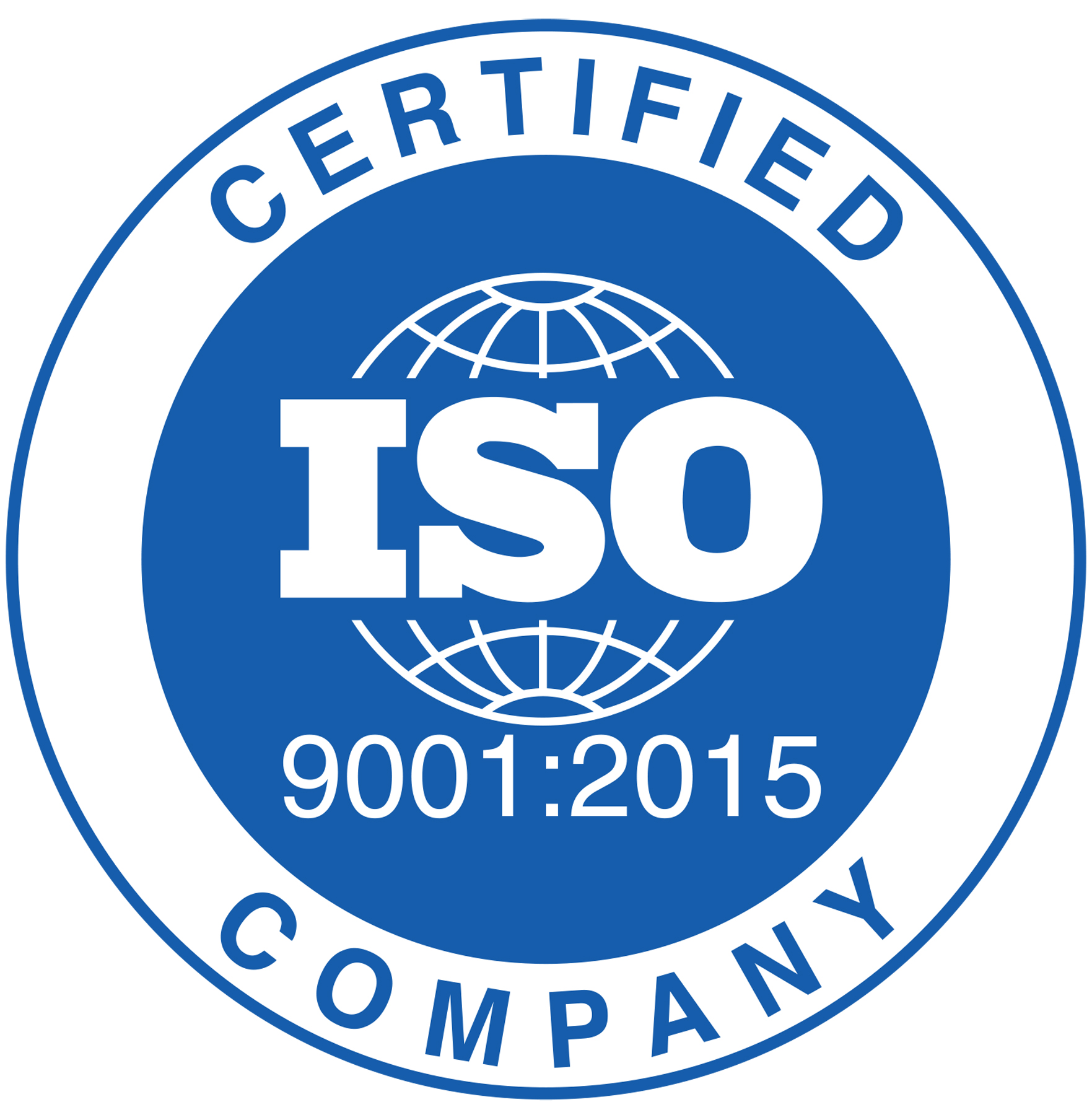At Kinetics Group, we’ve always believed that building entrances are more than just passageways—they’re the first line of defence for comfort, energy efficiency, and now, indoor air quality.
The latest report (2025) by Feng, Lan, Xie, and Ren, published in Building and Environment, introduces an innovation that aligns perfectly with Kinetics’ vision for cleaner, smarter, and more energy-efficient environments: an electrostatic-based air curtain purifier capable of removing almost 100% of airborne particles with minimal energy use.
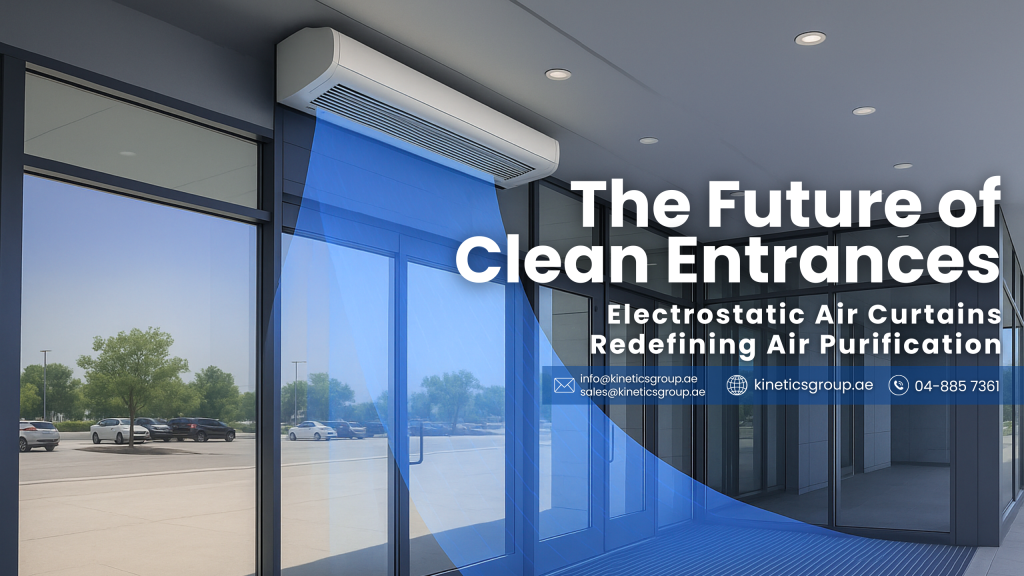
From Separation to Purification
Traditional air curtains, like those engineered by Kinetics and Berner, are widely used to create an invisible aerodynamic barrier that reduces energy loss, prevents dust intrusion, and maintains indoor comfort.
However, as indoor air quality (IAQ) becomes a global priority, engineers are rethinking what these devices can do. The study from Building and Environment (2025) introduces a dual-function system that not only isolates indoor and outdoor air but actively purifies it.
This new electrostatic air curtain purifier integrates:
- A particle charging zone, where airborne particles are ionized using corona discharge.
- A particle removal zone, where these charged particles are captured between parallel collection plates before the air exits as a clean, filtered jet.
The result? A nearly 100% removal efficiency for fine and ultrafine particles (0.1–2.5 µm) with ozone levels below 20 ppb—a massive leap forward for sustainable indoor air protection.
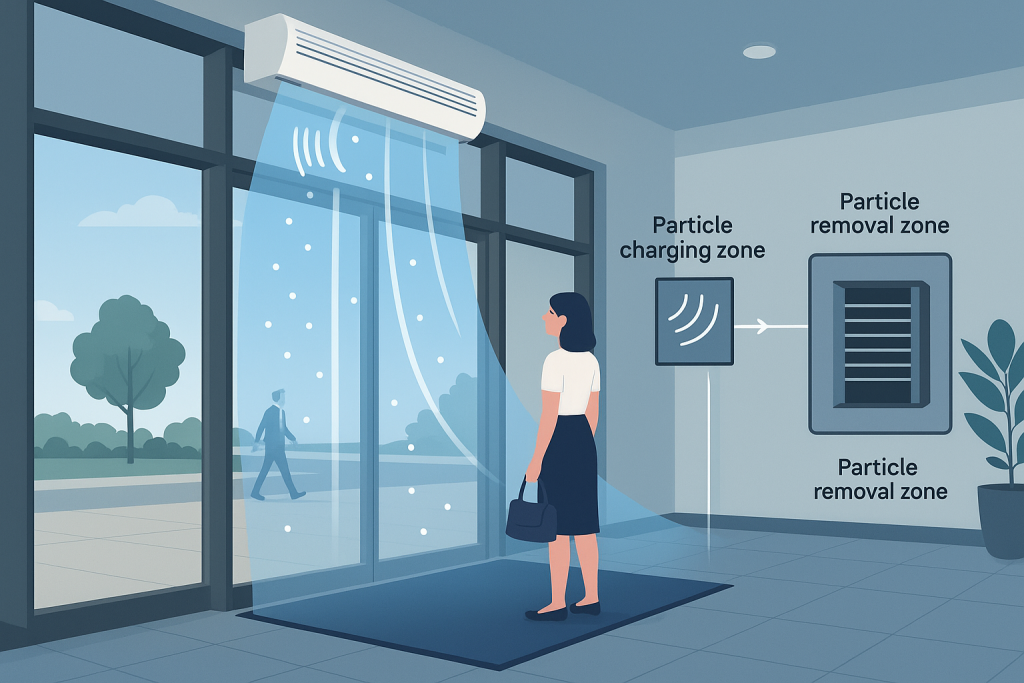
Behind the Technology
The research team developed multi-physics numerical models to simulate how air, particles, and electric fields interact inside this compact device.
Their optimization focused on:
- Electric field strength – balancing effective corona discharge with minimal ozone generation.
- Air velocity and zone geometry – maintaining strong flow without excessive power use.
- Energy consumption – ensuring the purifier remains efficient even at high airflow rates typical of commercial entrances.
Compared to conventional HEPA-based air curtains, this electrostatic design dramatically reduces pressure drop, filter replacement, and maintenance costs—issues often cited in high-traffic environments like hospitals, shopping centers, and transit facilities.
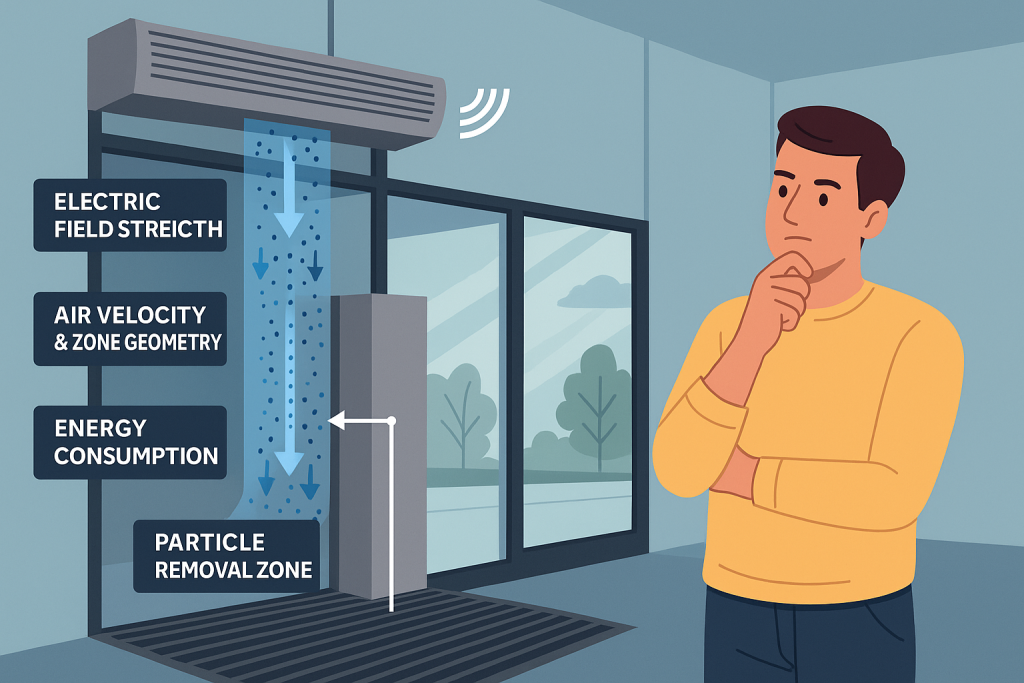
A Glimpse into the Future
This new generation of air curtains represents a paradigm shift—from air separation to air purification. For Kinetics, this kind of advancement reinforces what we’ve long pursued:
✅ Improving building performance while maintaining occupant comfort.
✅ Reducing HVAC energy losses through smart airflow control.
✅ Integrating clean-air technology into architectural design, seamlessly.
Kinetics Group continues to explore similar innovations, combining aerodynamic sealing with filtration, electrostatic purification, and acoustic optimization—helping architects, consultants, and engineers design safer, cleaner, and quieter spaces.
Key Takeaways
- The new electrostatic air curtain purifier achieves ~100% particle removal efficiency with low ozone generation (<20 ppb).
- It operates with low pressure loss and minimal energy consumption, making it viable for real-world commercial use.
- This innovation bridges the gap between air curtains and air purifiers, reshaping how buildings manage indoor air quality.
- The research validates that entrance-level purification can contribute meaningfully to IAQ goals without compromising design aesthetics or accessibility.
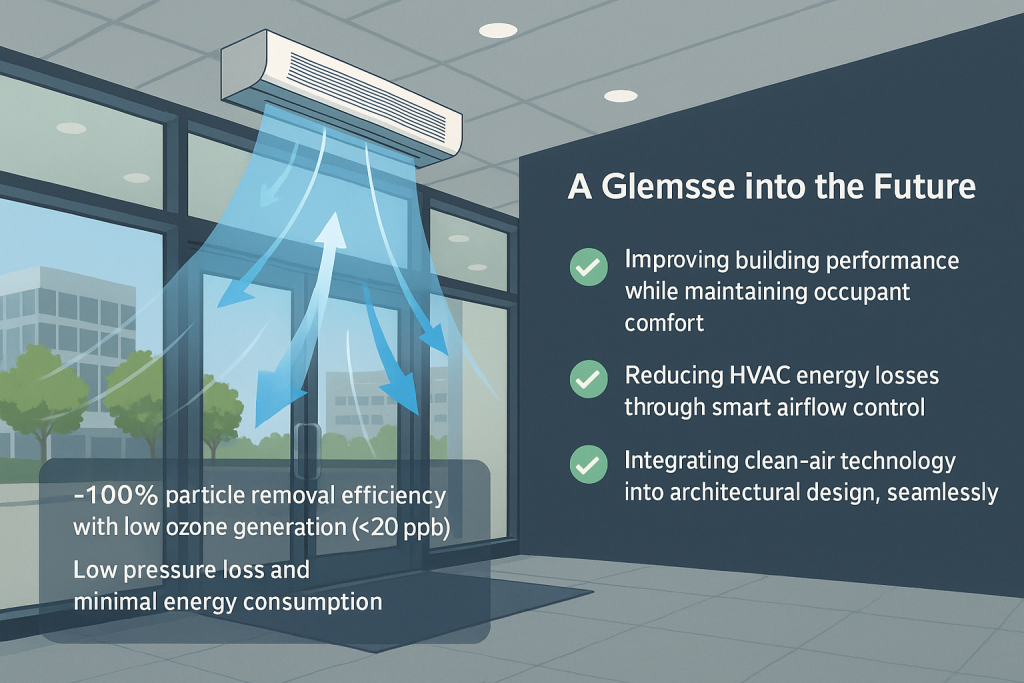
Let’s Build Healthier Entrances Together
At Kinetics Group, we’re passionate about translating advanced research into real-world engineering.
If you’re designing or retrofitting a facility where air purity, comfort, and energy performance matter—contact our technical team.
Let’s explore how advanced air curtain solutions can protect your spaces and the people who move through them every day.
📧 info@kineticsgroup.ae | sales@kineticsgroup.ae
📞 +971 4 885 7361
Reference
Feng, Z., Lan, X., Xie, J., & Ren, C. (2025). A novel electrostatic-based air curtain purifier for energy-efficient removal of airborne particles: Numerical simulation and multi-parameter optimization. Building and Environment, 113391.
https://doi.org/10.1016/j.buildenv.2025.113391


